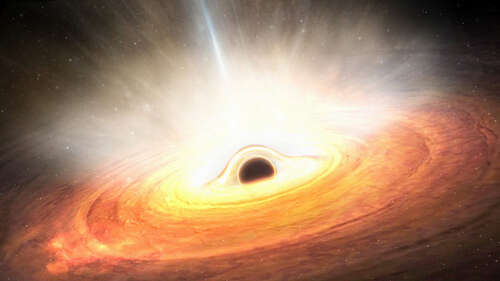
The study, published in “The Astrophysical Journal Letters,” looked at what happens as a black hole feeds. The strong gravity from the black hole attracts gas, which slowly begins to spin as it comes closer to the event horizon. This spinning causes the gas to flatten into a disc shape, called an accretion disc, where the gas gets hotter and hotter over time. When gas passes the event horizon and falls into the black hole, it is informally referred to as feeding. But something interesting happens to some of this gas. Not all of it falls into the black hole, as some is thrown away from the black hole and into space — “much like how a messy toddler spills a lot of what lies on their plate,” as ESA puts it.
This phenomenon is well known, but sometimes an extreme version occurs when the black hole “flips the table” by throwing out gas so fast that it empties the surrounding region of space. This leaves no more material for new stars to form in the vicinity, making a permanent change to the galaxy in which the black hole resides. This is known as an ultra-fast black hole wind and was observed in the new research — surprisingly, as the black hole in question was not in an especially bright accretion disc. “You might expect very fast winds if a fan was turned on to its highest setting. In the galaxy we studied, called Markarian 817, the fan was turned on at a lower power setting, but there were still incredibly energetic winds being generated,” said researcher Miranda Zak of the University of Michigan.

